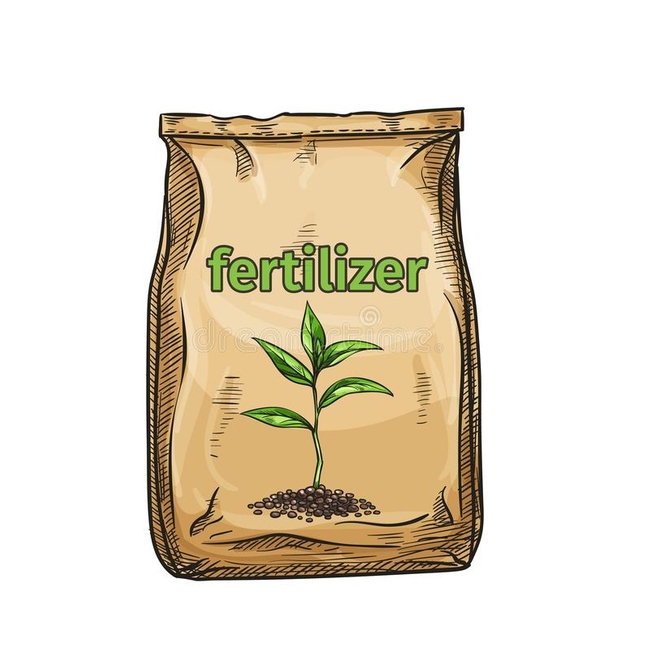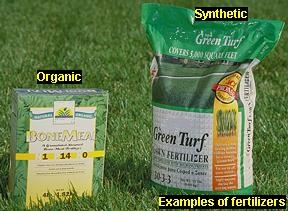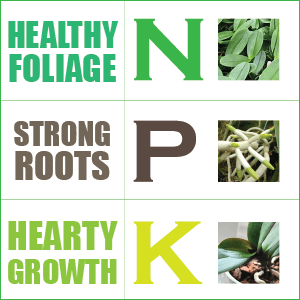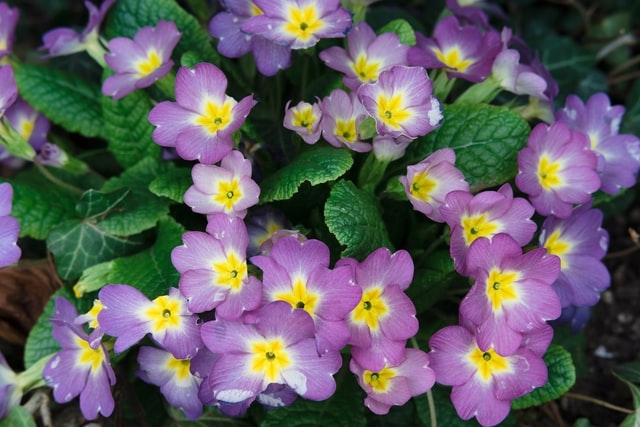By Cynthia Kerson, UC Master Gardener of Napa County
Recently, my husband asked me what to feed his container plants as they were starting to flower. I took his question as an opportunity to brush up on how to understand a fertilizer label.
Fertilizer labels have three hyphenated numbers, usually displayed as X-X-X. These numbers represent the percentages of nitrogen, phosphorous and potassium—in that order—in the package. A fertilizer labeled as 10-5-5 contains 10 percent nitrogen (N), 5 percent phosphorous (P) and 5 percent potassium (K). So a 10-pound bag would contain 1 pound of nitrogen, a half-pound of phosphorous and a half-pound of potassium. The remainder is filler that helps with dispersing the three macronutrients.
Organic fertilizers typically have macronutrient numbers in the single digits. Synthetic fertilizers, in contrast, use mineral salts, so it's much easier to make a concentrated product. However, the numbers tell only part of the story.
Synthetic fertilizers are more or less a one-pass event. Water dissolves the mineral salts and carries them past the plant roots, where they are taken up (or not). Excess synthetic fertilizer drains into the subsoil or, if we're unlucky, into groundwater.
Synthetic fertilizer, because it's water soluble, can also be carried off in irrigation or rainwater run-off. In addition, synthetic fertilizers reduce the number of soil bacteria.
In contrast, organic fertilizers require bacterial action before their nutrients are available to plants, so they feed plants more gradually and help sustain soil bacteria at the same time. This slow release of nutrients helps improve the health of your soil. Organic fertilizers, which are made from natural materials, contain nutrients in addition to those shown on the package.
The filler in a box of fertilizer keeps the nutrients from clumping or drying out and makes the fertilizer easy to spread. Companies making high-quality fertilizer will consider the filler almost as important as the nutrients themselves.
For the most part, Napa Valley soils have adequate potassium and phosphorous but may lack nitrogen. All three are essential to plant growth. Phosphorous supports root development. It helps the plant build starches, sugars and oils necessary for plant health. Dull leaves, purplish stems and overall unhealthy appearance may signal a phosphorous deficit. Breaking up hard soil can help with phosphorous absorption. Bone meal and manure are good organic sources of potassium.
Nitrogen supports leaf development. Nitrogen is part of all living things and, in plants, is necessary for chlorophyll production and photosynthesis. Yellowing leaves and poor overall plant growth are symptoms of low nitrogen. Composted animal manure, fish emulsion and coffee grounds are also great sources of nitrogen. Another option is to plant legumes (such as peas or beans), which fix nitrogen in the soil, or other cover crops. Cutting cover crops when they are still green and working them into the soil to decompose will add nitrogen to your soil.
Finally, potassium, which is found in potash, encourages flowering, both for ornamental and edible plants. Potassium keeps plants healthy by supporting photosynthesis and flower development. Leaf scorching, curling leaves, poor fruit production, as well as an overall sickly plant, may indicate a potassium deficiency. Kelp is an organic source of potassium, as are wood ashes from your fireplace.
When soil pH is between 6.5 and 7.5, most nutrients are available to plants. While Napa Valley soils are unlikely to have a pH problem, it makes sense to check the pH when your plant shows nutrient deficiencies.
If you've applied a balanced fertilizer but your plants are still not thriving, adjusting the soil pH with amendments may solve the problem. Resist the temptation to keep fertilizing because excess fertilizer can cause problems. For most plants, acidic soil (low pH) is more problematic than basic soil (higher pH). However, some plants, including citrus, blueberries, azaleas and rhododendrons, prefer acidic soil. Garden centers carry special fertilizers for citrus as well acid-loving plants such as azaleas and blueberries.
Generally, in Napa County, a high-nitrogen fertilizer will do the trick. However, if you're using store-bought gardening or potting soil, you may encounter other deficiencies and need a different fertilizer formulation.
When you fertilize, keep in mind that the plant's roots likely extend past its canopy. You're feeding the soil, not just the plant. Spread the fertilizer beyond the plant's immediate root zone.
Food Growing Forum: Last Sunday of the month through October. Register to get Zoom link at: http://ucanr.edu/foodgrowingforum2020
Sunday, October 25, 3 pm to 4 pm, “Planting Onions, Leeks and Other Alliums and What Else to Do Now”
Napa Library Talks: First Thursday of each month. Register to get Zoom link.
http://ucanr.edu/wildlifehabitat2020
Pollinator Gardening, Sundays, 1 pm to 2 pm. Register to get Zoom link.
|
October 4 – Planning Your Pollinator Garden http://ucanr.edu/2020pollinatorpart3planning |
|
|
October 11 – Caring for Your Pollinator Garden http://ucanr.edu/2020pollinatorpart4care |
Got Garden Questions? Contact our Help Desk. The team is working remotely so please submit your questions through our diagnosis form, sending any photos to mastergardeners@countyofnapa.org or leave a detailed message at 707- 253-4143. A Master Gardener will get back to you by phone or email.
For more information visit http://napamg.ucanr.edu or find us on Facebook or Instagram, UC Master Gardeners of Napa County.
Attached Images:



